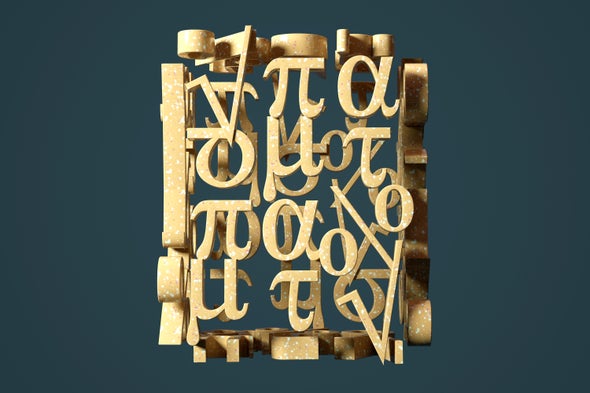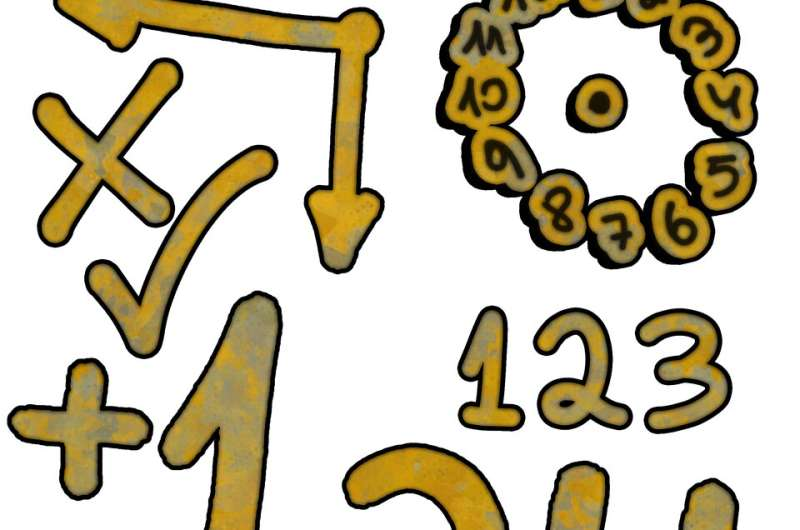
Mathematics can be both mind-boggling and illuminating. Though it can require mental gymnastics to follow some recent developments in math research, the effort is often rewarded with fascinating truths. This year math seeped into diverse realms of our lives and the world, showing us that the field affects all of us. Here’s a look at some of 2022’s most captivating math developments, including a mathematical attempt to prove the existence of God, the use of algorithms to help make citizen assemblies more fair, a fun subfield that deals with bendable shapes that helped find “doughnuts in the brain,” and more.
CAN GOD BE PROVED MATHEMATICALLY?
What sounds like an absurd question is actually a starting point for a fascinating history of mathematical attempts to prove or disprove the existence of a divine being. Journalist Manon Bischoff documents efforts by Blaise Pascal, René Descartes, Kurt Gödel and others to investigate the nature of God. Gödel, in fact, wrote an ontological proof in the mid 20th century that attempted to use logic to establish that God exists. Later a computer algorithm determined that his chain of reasoning was unassailable—in other words, God must exist. The caveat, though, is that the proof only works if you accept Gödel’s initial assumptions.
THE ELUSIVE ORIGIN OF ZERO
Humans invented numbers long before they invented a numeral for nothing. The first emergence of the concept of “zero” has long been a historical mystery, with scholars variously identifying the inventors of zero as the ancient residents of South America, China, India and Cambodia, among other locations. Mathematics educator and historian Frank Swetz and mathematician Shaharir bin Mohamad Zain recount their own investigations into the possible origin of zero among early inhabitants of the Indonesian island of Sumatra.
EXTREME NUMBERS GET NEW NAMES
Earth weighs around one ronnagram—that’s 1027 grams—and an electron’s mass is about one quectogram—10−30 gram. The prefixes “ronna” and “quecto,” along with several others denoting especially humongous or minuscule numbers, were recently added to the International System of Units (SI). The decision was approved at the November General Conference on Weights and Measures, held near Paris, in part to handle the growing amounts of data being generated worldwide. Journalist Elizabeth Gibney notes an additional motivation for adding the new prefixes: to prevent unofficial ones, such as “hella” for 1027, from taking hold.
THE MATHEMATICS BEHIND CITIZENS’ ASSEMBLIES
Citizens’ assemblies are randomly chosen groups of citizens whose demographics—age, gender, geography—represent a larger society. They have been used in Europe, Canada, Australia and U.S. states to weigh issues and make policy recommendations on topics such as abortion, carbon emissions and COVID protections. The mathematics of equitably and accurately choosing the members of an assembly turn out to be complex and intriguing. Computer scientist Ariel Procaccia describes his work on an algorithm that can compose a representative group of volunteers in the fairest possible way.
THE EVOLVING QUEST FOR A GRAND UNIFIED THEORY OF MATHEMATICS
An area of mathematics research called the Langlands program has been dubbed “a Grand Unified Theory of Mathematics” because of the connections it makes between many disparate subfields. Based on a set of conjectures by Robert Langlands, a mathematician at the Institute for Advanced Study in Princeton, N.J., the program touches on geometry, number theory and algebra, among many additional ideas. Journalist Rachel Crowell describes how the Langlands program is developing and making links even beyond mathematics to physics and otherrealms of science.
SQUISHY MATH REVEALS DOUGHNUTS IN THE BRAIN
Human brains still have an advantage over computers in identifying certain kinds of patterns that are immediately clear to our eyes but opaque to algorithms. Yet sometimes a set of data is too large for humans to manage the job. Researchers are working on teaching computers better ways of identifying shapes and patterns in data using a tool called topological data analysis, which relies on the mathematics of bendable shapes. Mathematician and journalist Kelsey Houston-Edwards describes how this technique has helped identify doughnut-shaped structures of neurons in the brain, as well as new arrangements of molecules that could be the basis for novel drugs.
Human brains still have an advantage over computers in identifying certain kinds of patterns that are immediately clear to our eyes but opaque to algorithms. Yet sometimes a set of data is too large for humans to manage the job. Researchers are working on teaching computers better ways of identifying shapes and patterns in data using a tool called topological data analysis, which relies on the mathematics of bendable shapes. Mathematician and journalist Kelsey Houston-Edwards describes how this technique has helped identify doughnut-shaped structures of neurons in the brain, as well as new arrangements of molecules that could be the basis for novel drugs.
3rd Edition of International Conference on Mathematics and Optimization Methods
Website Link:https://maths-conferences.sciencefather.com/
Award Nomination:https://x-i.me/XU6E
Instagram: https://www.instagram.com/maths98574/
Tumblr: https://www.tumblr.com/maths2588
Twitter: https://twitter.com/AnisaAn63544725
Linkedin: https://www.linkedin.com/feed/
Blogger: https://www.blogger.com/u/2/blog/posts/2122876331378747107?pli=1#create
Pinterest: https://in.pinterest.com/maxconference20022/
#maths #numericals #algebra #analysis #analysis #mathmatics #numericals #number #complex #graphics #graphs

No comments:
Post a Comment